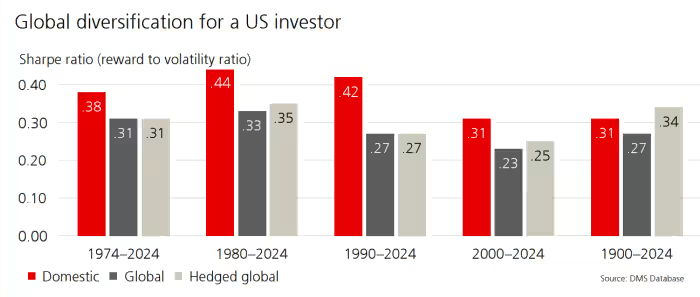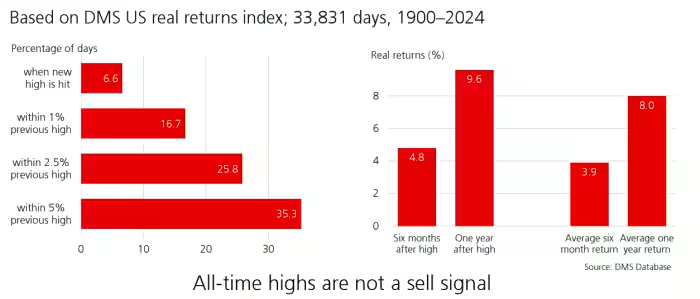Global Investment Returns Yearbook Highlights Stock-Market Profitability and Volatility
A nostalgic clip from Ferris Bueller’s Day Off, featuring economist Ben Stein’s dry explanation of the Smoot-Hawley Act, has been circulating on social media. The Act, which raised tariffs to boost revenue but ultimately worsened the Great Depression, sparks curiosity about its potential modern-day parallels.
Against this backdrop, UBS released its annual Global Investment Returns Yearbook on Tuesday, offering insights from 125 years of market data. Compiled by Paul Marsh and Mike Staunton of the London Business School, along with Elroy Dimson of Cambridge University, the report underscores both the profitability and volatility of stock-market investing.
Since 1900, U.S. stocks have delivered inflation-adjusted annual returns of 6.6%, outperforming bonds at 1.6% and bills at 0.5%. Meanwhile, global markets excluding the U.S. averaged 4.3% annually, reinforcing the theme of U.S. market exceptionalism—despite its relative underperformance in the early months of 2025.
However, the study highlights that volatility remains an inherent feature of stock investing. Significant market downturns have historically required lengthy recovery periods—15.5 years following the Great Depression, 10 years after the 1970s oil shock, 7.5 years post-dot-com bust, and four years after the global financial crisis.

The report also revisits the concept of international diversification, popularized in 1974. While the strategy hasn’t benefited U.S. investors much since then—based on Sharpe ratio analysis—it has proven valuable for most other countries. The authors maintain that diversification remains a prudent strategy for all investors, though they caution that even sound decisions can yield poor outcomes.
Cross-asset diversification has historically been effective, though recent inflationary spikes have tested its reliability. Despite this, the traditional 60/40 portfolio model (60% stocks, 40% bonds) continues to demonstrate a superior Sharpe ratio compared to stocks or bonds alone.
Diversification within the stock market itself also pays off. Analyzing 64,738 companies from 42 countries between 1990 and 2020, the report found that 57% of stocks underperformed Treasury bills, while 71% failed to beat the index. However, the exceptional performance of top stocks more than offset these underachievers.
Market timing remains a difficult game. Excluding the worst 20 months over the past 125 years would have boosted returns by over 3% annually, but missing the best 20 months would have reduced returns by nearly 3% annually. The authors stress that broad diversification is key—unless one possesses rare stock-picking talent.

Addressing concerns about investing at all-time highs, the authors dismiss the notion that such peaks signal an impending downturn. Elroy Dimson noted that investors who feared U.S. market dominance and exited prematurely have historically missed out on gains.
When asked for advice, Paul Marsh offered a simple yet powerful strategy: “Don’t look at your portfolio frequently. Just stay invested.” This advice holds particular relevance in today’s unpredictable market environment.




